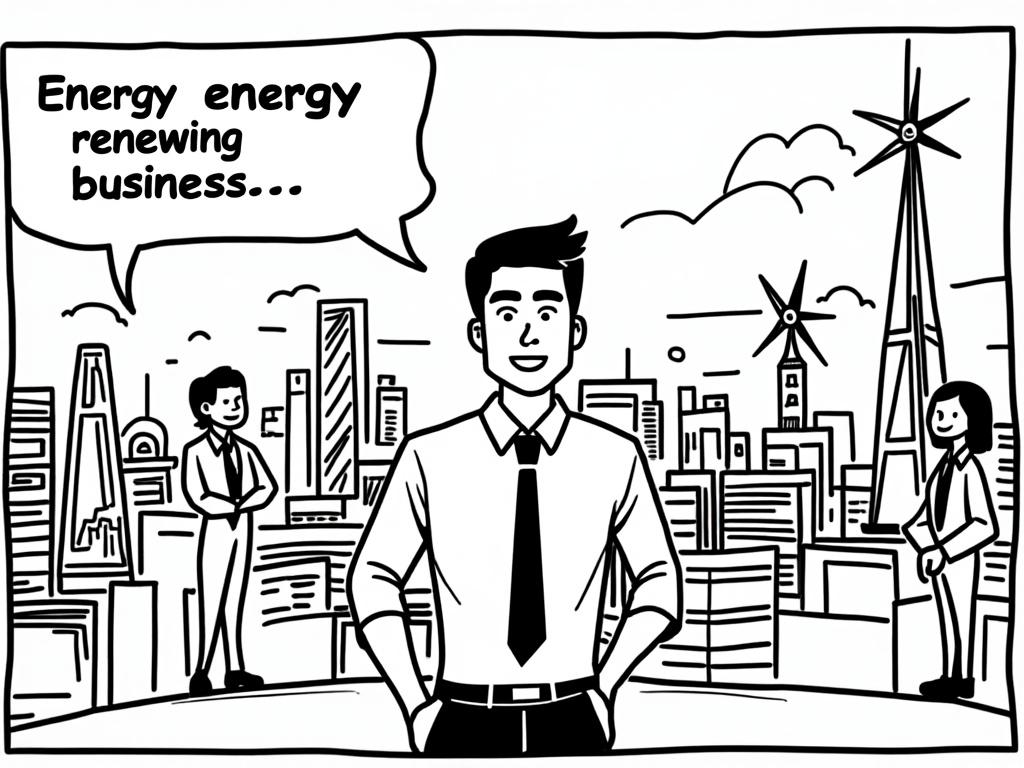
Greece’s Solar Revolution: Navigating the Mediterranean’s Renewable Energy Boom
Reading time: 12 minutes
Ever wondered how a country historically dependent on imported fossil fuels transforms into a renewable energy powerhouse? Greece’s journey from economic crisis to green energy leadership offers compelling lessons for investors, policymakers, and environmental advocates worldwide.
Table of Contents
- The Current Renewable Energy Landscape
- Flagship Projects Reshaping Greece’s Energy Future
- Investment Climate and Opportunities
- Overcoming Implementation Challenges
- Comparative Market Analysis
- Strategic Roadmap Forward
- Frequently Asked Questions
The Current Renewable Energy Landscape
Greece’s renewable energy transformation represents one of Europe’s most dramatic success stories. With over 300 days of sunshine annually and consistent wind patterns across its islands, the country has leveraged natural advantages to achieve remarkable progress.
Key Performance Indicators:
- Renewable energy contribution: 42% of total electricity generation (2023)
- Solar capacity growth: 350% increase since 2019
- Wind energy expansion: 4.2 GW installed capacity
- Investment inflow: €8.2 billion committed through 2027
Here’s the straight talk: Greece’s transition isn’t just about environmental responsibility—it’s about economic independence and energy security. The country’s strategic position as a Mediterranean energy hub creates unique opportunities for cross-border collaboration.
Solar Energy Dominance
Greece’s solar revolution exemplifies strategic resource utilization. The Hellenic Island of Rhodes recently achieved 80% renewable energy coverage during peak summer months, demonstrating scalable island solutions that other Mediterranean regions are studying closely.
Quick Scenario: Imagine you’re planning a large-scale solar installation. What regulatory framework supports your investment? Greece’s simplified licensing procedures now allow photovoltaic projects under 1 MW to receive permits within 60 days—a dramatic improvement from previous multi-year processes.
Wind Energy Coastal Advantages
Coastal wind farms capitalize on consistent Aegean Sea breezes. The Aegean Wind Park complex generates enough electricity to power 150,000 households annually, showcasing how geographic advantages translate into measurable energy output.
Flagship Projects Reshaping Greece’s Energy Future
Three transformative projects illustrate Greece’s renewable energy ambition and execution capability:
The Kozani Solar Initiative
Located in Northern Greece, this 200 MW solar park represents the country’s largest single photovoltaic installation. Completed in 2023, the project demonstrates several breakthrough innovations:
- Bifacial panel technology: 15% higher energy yield than traditional panels
- Smart grid integration: Real-time demand response capabilities
- Local employment: 400 permanent jobs created in rural communities
- Land optimization: Agrivoltaics combining energy production with agricultural activities
The Kozani project’s success stems from comprehensive stakeholder engagement. Local farmers initially skeptical about land use changes became project supporters when they discovered sheep grazing beneath solar panels actually improved panel efficiency through natural cleaning and cooling effects.
Crete’s Energy Independence Blueprint
Crete’s ambitious goal of 70% renewable energy by 2025 showcases island-specific solutions. The integrated approach combines:
- Distributed solar installations across hotels and residential buildings
- Battery storage systems providing grid stability
- Smart meters enabling dynamic pricing
- Electric vehicle charging infrastructure expansion
Pro Tip: Island projects face unique challenges—grid stability, storage requirements, and seasonal demand fluctuations. Crete’s holistic approach addresses these systematically, creating a replicable model for other Mediterranean islands.
The Floating Solar Innovation
Greece’s first floating photovoltaic installation on Lake Polyfytos demonstrates technological adaptation to geographic constraints. This 1.2 MW pilot project achieves:
- 12% higher efficiency due to water cooling effects
- Reduced water evaporation by 30% in covered areas
- Minimal environmental impact on aquatic ecosystems
- Scalability potential across Greece’s numerous artificial lakes
Investment Climate and Opportunities
Greece’s investment landscape has transformed dramatically since implementing the National Energy and Climate Plan (NECP). Government incentives, EU funding, and private sector interest create a compelling investment ecosystem.
Investment Incentives Overview:
Tax Benefits: 40% accelerated depreciation for renewable energy equipment
Feed-in Tariffs: Guaranteed 20-year power purchase agreements
EU Co-financing: Up to 50% project funding through Recovery and Resilience Facility
Simplified Permitting: One-stop-shop licensing for projects under 10 MW
The connection between renewable energy development and real estate opportunities creates additional investment angles. Many international investors explore buying real estate in greece specifically to capitalize on solar installation potential and energy-efficient property developments.
Private Sector Success Stories
Case Study: Terna Energy’s Diversification Strategy
Greece’s largest renewable energy company demonstrates successful scaling approaches. Terna Energy’s portfolio includes:
- Wind farms: 671 MW operational capacity
- Solar installations: 245 MW across 15 locations
- Hydroelectric plants: 130 MW utilizing mountain watersheds
- Energy storage: 120 MW battery capacity planned by 2025
Terna’s integrated approach—combining generation, storage, and grid services—provides investors with insights into comprehensive renewable energy strategies.
Overcoming Implementation Challenges
Despite remarkable progress, Greece’s renewable energy sector faces persistent challenges requiring strategic solutions:
Grid Infrastructure Modernization
Challenge: Aging electrical grid infrastructure struggles with variable renewable energy input, particularly during peak production periods.
Solution Approach: Greece’s €2.1 billion grid modernization program focuses on:
- Smart grid technologies enabling real-time demand management
- Enhanced interconnection capacity with neighboring countries
- Distributed storage systems reducing transmission bottlenecks
- Advanced forecasting systems predicting renewable energy output
Permitting Complexity for Large Projects
Challenge: Environmental assessments and archaeological surveys can delay large-scale projects by 12-18 months.
Strategic Navigation: Successful developers employ several tactics:
- Early stakeholder engagement with local communities and environmental groups
- Comprehensive site surveys conducted during project planning phases
- Parallel processing of permits rather than sequential applications
- Professional consulting partnerships with established Greek regulatory experts
Seasonal Demand Fluctuations
Challenge: Tourism-driven energy demand peaks during summer months when solar production is highest, but winter heating demands stress the grid when solar output decreases.
Innovative Solutions:
- Seasonal energy storage using pumped hydro facilities
- Heat pump incentives reducing winter electricity demand
- Industrial demand response programs shifting energy-intensive operations to high production periods
- Regional energy trading agreements balancing supply across Mediterranean countries
Comparative Market Analysis
Understanding Greece’s position relative to Mediterranean competitors provides crucial market context:
| Country | Renewable % | Solar Capacity (GW) | Investment Climate | Grid Stability |
|---|---|---|---|---|
| Greece | 42% | 3.8 | Excellent | Good |
| Spain | 47% | 15.2 | Very Good | Excellent |
| Italy | 38% | 22.6 | Good | Good |
| Portugal | 61% | 1.9 | Excellent | Very Good |
| Cyprus | 18% | 0.3 | Moderate | Fair |
Competitive Advantages Analysis
85% – Excellent irradiance levels
78% – Streamlined processes
65% – Developing rapidly
72% – Improving infrastructure
Strategic Roadmap Forward
Greece’s renewable energy trajectory points toward transformative changes that will reshape both the energy sector and broader economic landscape. Here’s your practical roadmap for navigating this evolution:
Immediate Action Steps (2024-2025)
- Assess Market Entry Points: Identify specific renewable energy segments aligned with your investment capacity—rooftop solar for commercial properties, community wind projects, or energy storage solutions offer different risk-return profiles.
- Build Local Partnerships: Establish relationships with Greek renewable energy developers, legal advisors familiar with environmental permitting, and financial institutions offering green financing products.
- Monitor Regulatory Updates: Subscribe to official announcements from the Greek Ministry of Environment and Energy, as policy changes can create sudden investment opportunities or requirements.
- Evaluate Grid Connection Opportunities: Research areas with available grid capacity and minimal connection delays—rural regions often offer faster permitting but may require additional infrastructure investment.
Medium-Term Positioning (2025-2027)
The convergence of EU climate funding, technological advancement, and Greek energy independence goals creates unprecedented opportunities. Forward-thinking investors should consider:
- Energy Storage Integration: Battery technology costs continue declining while grid stability requirements increase—positioning for storage-plus-generation projects offers competitive advantages.
- Cross-Border Energy Trading: Greece’s strategic location enables energy exports to neighboring countries, creating revenue streams beyond domestic consumption.
- Sector Diversification: Green hydrogen production, using excess renewable capacity, represents emerging opportunities as European demand accelerates.
The renewable energy transformation connects directly to broader economic development patterns. Real estate values near major renewable installations often appreciate due to infrastructure improvements and local economic activity.
Ready to transform market complexity into competitive advantage? Greece’s renewable energy sector rewards those who combine technical understanding with strategic patience—the question isn’t whether this transformation will continue, but how effectively you’ll position yourself within it.
Frequently Asked Questions
What are the minimum investment requirements for renewable energy projects in Greece?
Investment thresholds vary significantly by project type. Small-scale rooftop solar installations start around €50,000, while utility-scale projects typically require €2-5 million minimum investments. However, community solar programs and renewable energy funds offer entry points for smaller investors, often with minimum commitments of €10,000-25,000. Government incentives can reduce effective investment requirements by 20-40% depending on project size and location.
How long does the permitting process take for renewable energy projects?
Permitting timelines depend heavily on project scale and complexity. Small installations under 1 MW can receive permits within 60-90 days through streamlined procedures. Medium-scale projects (1-10 MW) typically require 6-12 months, while large utility-scale developments may take 18-24 months due to environmental assessments and archaeological surveys. Working with experienced local consultants can significantly reduce delays and ensure complete application submissions.
What financing options are available for international investors in Greek renewable energy?
Multiple financing channels support renewable energy investments in Greece. European Investment Bank green loans offer attractive interest rates for qualifying projects. Greek commercial banks provide specialized renewable energy financing with terms up to 15 years. EU Recovery and Resilience Facility funds can cover up to 50% of eligible project costs. Additionally, green bonds and renewable energy investment funds provide alternative financing structures for different investor profiles and risk tolerances.

Article reviewed by Isabella Fontaine, Alpine Luxury Properties | Discreet High-Altitude Investments, on June 6, 2025
